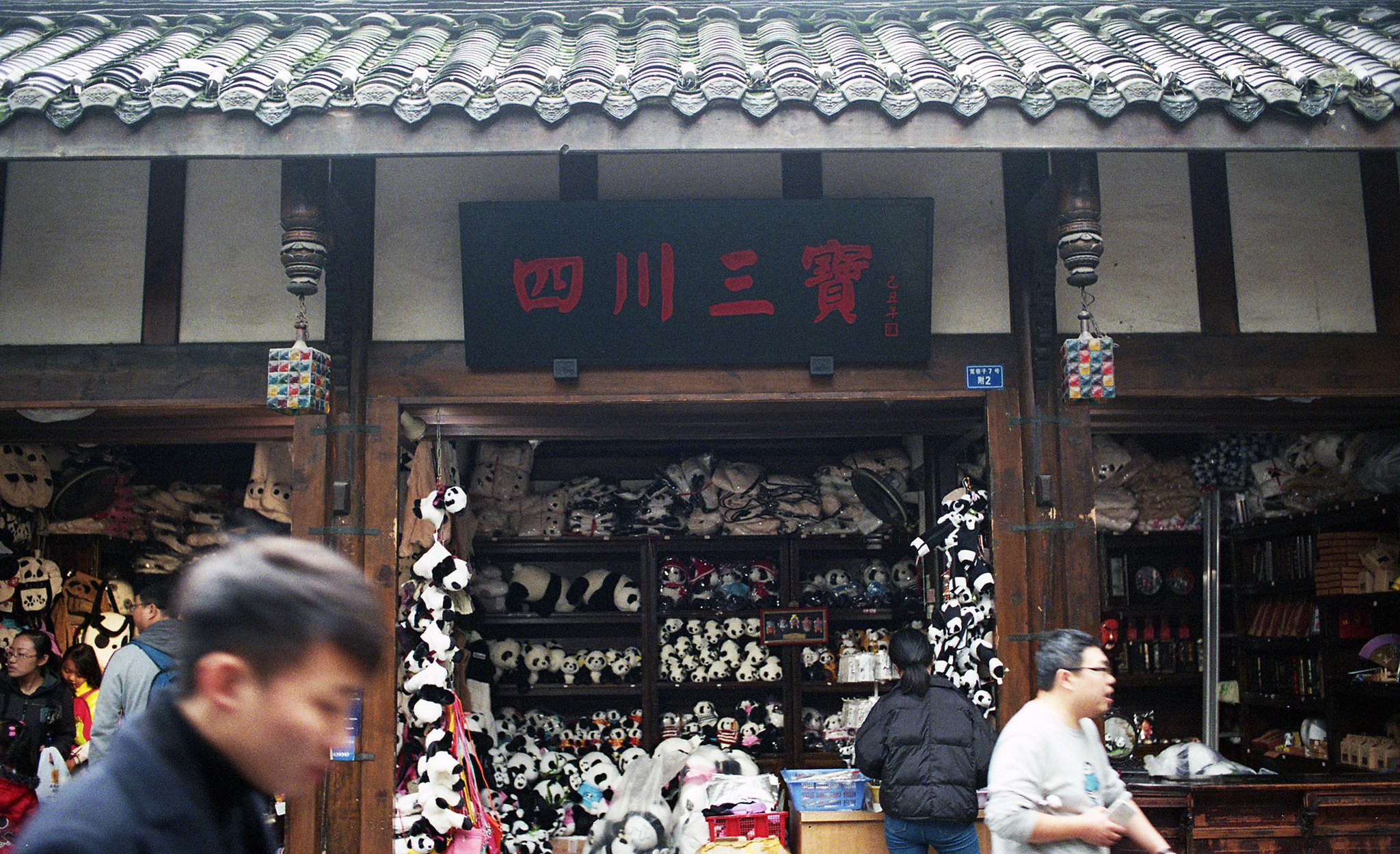Kuanzhai Alley, also known as Wide and Narrow Alleys, is a historic pedestrian street in Chengdu, Sichuan Province, China. Dating back to the Qing Dynasty, this popular tourist destination consists of three parallel alleys: Kuan Alley (Wide Alley), Zhai Alley (Narrow Alley), and Jing Alley (Well Alley). The area showcases traditional Sichuan architecture, with restored courtyard houses, teahouses, and shops lining the streets. Kuanzhai Alley offers visitors a glimpse into old Chengdu culture while providing modern amenities, including restaurants, bars, and boutiques. The blend of ancient charm and contemporary attractions makes it a unique and vibrant destination for both locals and tourists exploring Chengdu’s rich history and cultural heritage.
Nestled in the heart of Chengdu, China, Kuanzhai Alley stands as a testament to the city’s rich history and architectural heritage. This charming network of three parallel alleys – Kuan Alley (Wide Alley), Zhai Alley (Narrow Alley), and Jing Alley (Well Alley) – offers visitors a unique glimpse into the past while seamlessly blending with modern amenities. As you wander through these ancient streets, you’ll find yourself transported to a world where traditional Qing dynasty architecture meets contemporary culture.
One of the most striking features of Kuanzhai Alley is its well-preserved Qing-style buildings. These structures, with their distinctive gray brick walls and elegant tile roofs, have stood the test of time for over 300 years. As you explore the area, you’ll notice the intricate wooden carvings adorning doorways and windows, each telling a story of the skilled craftsmen who once called this place home. The buildings’ courtyards, hidden behind ornate gates, offer a peaceful retreat from the bustling streets and provide a perfect spot for contemplation.
While strolling through the alleys, keep an eye out for the unique architectural elements that make Kuanzhai Alley so special. One such feature is the “horse-head walls,” which are decorative extensions of the side walls that rise above the roofline. These walls not only add visual interest to the buildings but also served a practical purpose in preventing fires from spreading between neighboring houses. Another interesting detail to look for is the stone drums placed at the entrance of many buildings. These drums, often intricately carved, were used to mount horses and served as a symbol of status for the wealthy residents of the area.
As you delve deeper into Kuanzhai Alley, you’ll discover that each of the three alleys has its own distinct character. Kuan Alley, the widest of the three, is lined with impressive mansions that once belonged to high-ranking Qing officials. These grand residences showcase the opulence of the era, with spacious courtyards and elaborate decorations. In contrast, Zhai Alley offers a more intimate experience, with its narrow lanes and closely packed buildings creating a cozy atmosphere. Jing Alley, named after the many wells that once dotted its length, provides a glimpse into the daily life of ordinary citizens during the Qing dynasty.
One of the most fascinating aspects of Kuanzhai Alley’s architecture is how it has been adapted to meet modern needs while still preserving its historical essence. Many of the old buildings have been carefully renovated and repurposed as trendy cafes, boutique shops, and art galleries. This blend of old and new creates a unique atmosphere where visitors can enjoy a cup of coffee in a centuries-old courtyard or browse contemporary art in a traditional Qing-style building.
As you explore Kuanzhai Alley, take the time to appreciate the small details that make this area so special. Notice the intricate stone carvings on the pavement, the weathered wooden doors with their brass knockers, and the traditional lanterns that cast a warm glow over the streets at night. These elements all contribute to the area’s charm and help to create an immersive experience that transports visitors back in time.
In conclusion, Kuanzhai Alley’s ancient architecture offers a fascinating journey through China’s architectural history. From the grand mansions of Kuan Alley to the intimate lanes of Zhai Alley, each corner of this historic district has a story to tell. By taking the time to explore and appreciate the hidden gems of Kuanzhai Alley, visitors can gain a deeper understanding of Chengdu’s rich cultural heritage and the enduring beauty of traditional Chinese architecture.Kuanzhai Alley, located in Chengdu, Sichuan Province, China, stands as a testament to the city’s rich cultural heritage and modern revitalization efforts. This historic district, comprising three parallel alleys – Kuan Alley, Zhai Alley, and Jing Alley – offers visitors a unique blend of traditional Qing dynasty architecture and contemporary amenities. The area’s successful preservation and development have transformed it into a popular tourist destination, showcasing local cuisine, artisanal crafts, and cultural performances. Kuanzhai Alley serves as a model for urban renewal projects that balance historical conservation with modern economic growth, providing both residents and tourists with a vibrant space to experience Chengdu’s past and present.

